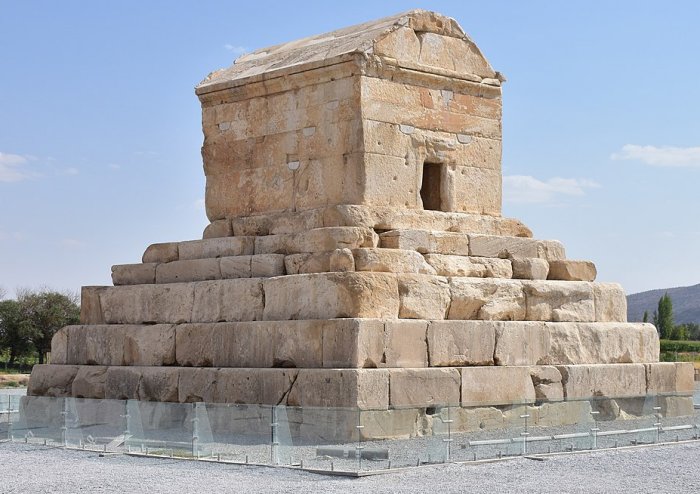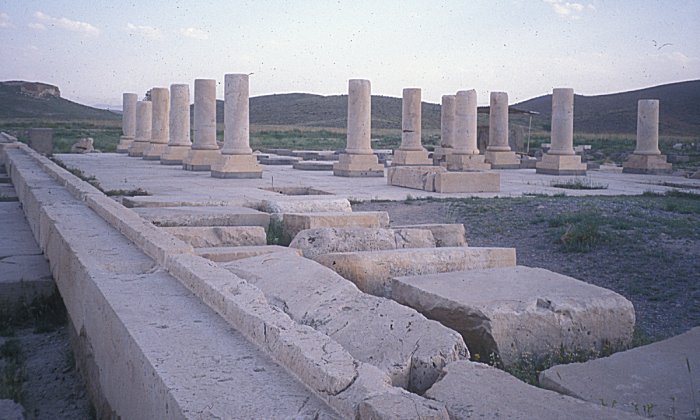Pasargadae: Capital Of Achaemenid Empire Destroyed By Alexander The Great
A. Sutherland - AncientPages.com - Today, Pasargadae are ruins of an ancient city in southwestern Iran, in the village of Mashhad-e Murghab, in the Zagros mountains, at an altitude of 1900 m, northeast of the city of Shiraz.
The fourth king of Anshan and the first king of the Achaemenid Empire, Cyrus II (d. 530 BC), also known as Cyrus the Great ordered the construction of Pasargadae during 559-530 BC, and in this city was located Cyrus’ tomb.
The city was the first capital of the Achaemenid Empire - one of the largest empires in history that covered approximately 5.5 million square kilometers and extended from the Balkans and Eastern Europe to the Hindus River in India.
In addition, this great empire was considered the first known for its cultural diversity of its people.
However, it lost its importance at the end of the sixth century in favor of Persepolis; 330 BC captured and plundered by Alexander III the Great. Some preserved remains of the once flourishing Pasargadae include the famous stone tomb of Cyrus II the Elder in the form of a four-sided eleven-meter high structure with a gable roof, ruins of the palace complex decorated with reliefs, a stone tower - a temple of fire, and 2 monolithic stone altars of fire.
The tomb of Cyrus the Great was also built in Pasargadae and was the most important monument in the city. Image credit: Bernd81 - CC BY-SA 4.0
In antiquity, the city was green. Eight or more dams regulated the river and stored water for irrigation.
Today, the region of Pasargadae is arid but it remains an important archaeological site. Archaeologists paid much attention to Achaemenid stone monuments, the role and design of the garden, and jewelry items.
Unique Techniques Used To Withstand Earthquakes
Not long ago, archaeologists found that Achaemenid engineers built the city of Pasargadae using unique structural techniques to withstand a strong earthquake that would today be classified as 7.0 on the Richter magnitude scale.
Inscription In Tomb of Cyrus the Great
No doubt, the most prominent monument in the city of Pasargadae, was the mausoleum of Cyrus.
Pasargad audience hall. Image credit: Zereshk - CC BY-SA 3.0
It has six broad steps leading to the sepulchre, the chamber of which measures 3.17 m long by 2.11 m wide by 2.11 m high and has a low and narrow entrance.
Though there is no firm evidence identifying the tomb as that of Cyrus, Greek historians tell that Alexander III of Macedon believed it really was. So, when Alexander looted and destroyed Persepolis, he visited the tomb of Cyrus and ordered one of his warriors, to enter the monument.
Inside, there was a golden bed, a table set with drinking vessels, a gold coffin, some ornaments studded with precious stones, and an inscription on the tomb.
No trace of any such inscription exists today and only Strabo reports that it read:
“Passer-by, I am Cyrus, who gave the Persians an empire and was king of Asia. Grudge me not, therefore, this monument…”
The Roman geographer Strabo of Amasia confirms in his ‘Geography’ that Pasargadae was built on the site where King Cyrus defeated the leader of the Medes, Astyages, in 550 BC. Building inscriptions found in the palace also confirm that Cyrus was indeed the builder of the town.
Persepolis stairs of the Apadana. Image credit: Taranis-iuppiter - CC BY-SA 3.0
After King Darius I the Great (522-486) built a new capital, Persepolis, Pasargadae remained an important place, and probably was some kind of religious capital of the Achaemenid empire. The tomb of Cyrus probably played a role in ceremonies taking place at Pasargadae.
Citadel And Audience Hall Among Oldest Monument Of Pasargadae
Pasargadae contained palaces and many other monumental structures; especially impressive and the oldest monument was a citadel Tall-i-Takht ('throne hill') that overlooked a garden ('paradise') in the south, and the palace complex as well. Built during the reign of Cyrus the Great, the citadel was never finished after his death in 530 BC.
Pasargadae represents the first phase of a specific Persian architecture which later found its full expression in the city of Persepolis.
Another historical structure is Apadana - the many columned audience hall that represented the splendid design by Darius I the Great (r. 522-486 BC). Apadana was part of king Cyrus' palace and was approached from the south-east. Apadana structures were influenced by several motifs from Phoenicia and Assyria and sculptures were created by the best stonemasons from Greek Ionia.
The Apadana structure is only mentioned in some building inscriptions; in one of Darius II (424-05 BC) and three of his son, Artaxerxes II (405-359 BC).
Pasargadae represents the first phase of this development into a specifically Persian architecture which later found its full expression in the city of Persepolis.
Written by – A. Sutherland AncientPages.com Senior Staff Writer
Copyright © AncientPages.com All rights reserved. This material may not be published, broadcast, rewritten or redistributed in whole or part without the express written permission of AncientPages.com
Expand for referencesMore From Ancient Pages
-
 Lao Tzu: Legendary Thinker And Founder Of Taoism Who Advocated Modesty, Self-Restraint And Balance
Chinese Mythology | Jul 13, 2019
Lao Tzu: Legendary Thinker And Founder Of Taoism Who Advocated Modesty, Self-Restraint And Balance
Chinese Mythology | Jul 13, 2019 -
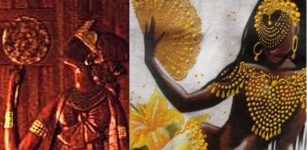 Oshun Goddess Of Yoruba People Who Brings All Things That Make Life Worth Living
African Mythology | Mar 29, 2019
Oshun Goddess Of Yoruba People Who Brings All Things That Make Life Worth Living
African Mythology | Mar 29, 2019 -
 Secret Passageways And Caves Beneath UK’s City Of Nottingham
Featured Stories | Feb 14, 2023
Secret Passageways And Caves Beneath UK’s City Of Nottingham
Featured Stories | Feb 14, 2023 -
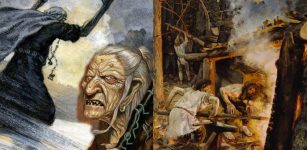 Louhi – Witch Goddess Of The North And The Magical Artifact Sampo In Finnish Mythology
Featured Stories | Sep 21, 2017
Louhi – Witch Goddess Of The North And The Magical Artifact Sampo In Finnish Mythology
Featured Stories | Sep 21, 2017 -
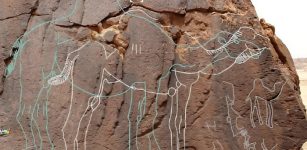 Remarkable Neolithic Life-Sized Camel Engravings Discovered In The Nefud Desert
Archaeology | Oct 5, 2023
Remarkable Neolithic Life-Sized Camel Engravings Discovered In The Nefud Desert
Archaeology | Oct 5, 2023 -
 Impressive Column Of Emperor Marcus Aurelius – War Monument From Ancient Rome
Featured Stories | Jul 6, 2017
Impressive Column Of Emperor Marcus Aurelius – War Monument From Ancient Rome
Featured Stories | Jul 6, 2017 -
 1,300-Year-Old Art Mystery Solved By Scientist
Archaeology | Sep 7, 2022
1,300-Year-Old Art Mystery Solved By Scientist
Archaeology | Sep 7, 2022 -
 New Cosmic Ray Bombardment Of The Great Pyramid – Search For The Hidden Chamber Continues
Archaeology | Jan 20, 2020
New Cosmic Ray Bombardment Of The Great Pyramid – Search For The Hidden Chamber Continues
Archaeology | Jan 20, 2020 -
 Knights Templar’s Legendary Sword In Stone In Terminillo Mysteriously Disappeared – Where Is It Hidden?
Featured Stories | May 3, 2021
Knights Templar’s Legendary Sword In Stone In Terminillo Mysteriously Disappeared – Where Is It Hidden?
Featured Stories | May 3, 2021 -
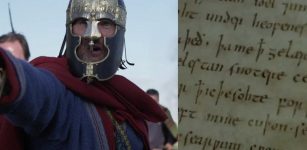 Beowulf Is Much Older Than Previously Thought And Not An English Poem – Professor Says
Linguistic Discoveries | Jan 6, 2020
Beowulf Is Much Older Than Previously Thought And Not An English Poem – Professor Says
Linguistic Discoveries | Jan 6, 2020 -
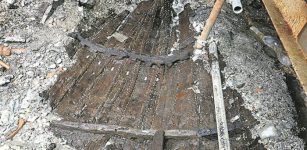 Ancient Roman Wooden Sewn Boat Unearthed In Croatia
Archaeology | May 3, 2020
Ancient Roman Wooden Sewn Boat Unearthed In Croatia
Archaeology | May 3, 2020 -
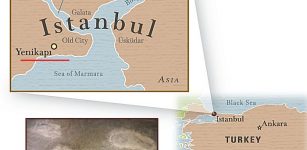 Yenikapı Excavations Reveal 8,500-Year-Old Artifacts
Archaeology | Jan 10, 2016
Yenikapı Excavations Reveal 8,500-Year-Old Artifacts
Archaeology | Jan 10, 2016 -
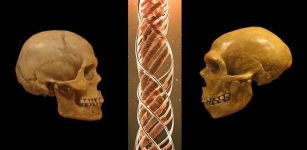 5 Surprising Things DNA Has Revealed About Our Ancestors
DNA | Sep 27, 2023
5 Surprising Things DNA Has Revealed About Our Ancestors
DNA | Sep 27, 2023 -
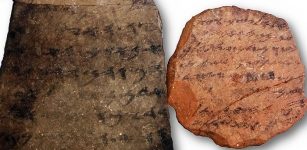 Widespread Literacy In Biblical-Period Kingdom Of Judah – Study Confirms
Archaeology | Sep 11, 2020
Widespread Literacy In Biblical-Period Kingdom Of Judah – Study Confirms
Archaeology | Sep 11, 2020 -
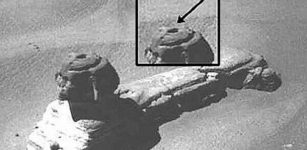 Head Of The Great Sphinx Was Changed – It’s The Gateway To A Secret Underground City– Historians Suggest
Featured Stories | Jan 20, 2018
Head Of The Great Sphinx Was Changed – It’s The Gateway To A Secret Underground City– Historians Suggest
Featured Stories | Jan 20, 2018 -
 Rock-Cut Chambers In “House of Muses” Of Zeugma, Home To Numerous Mosaics
Archaeology | Jul 27, 2021
Rock-Cut Chambers In “House of Muses” Of Zeugma, Home To Numerous Mosaics
Archaeology | Jul 27, 2021 -
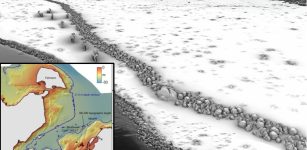 Underwater Drone Images Reveal Oldest Human-Made Structure In The Baltic Sea
Archaeology | Feb 13, 2024
Underwater Drone Images Reveal Oldest Human-Made Structure In The Baltic Sea
Archaeology | Feb 13, 2024 -
 Intriguing And Suprising Ancient History Of Swimming That Started Over 100,000 Years Ago
Featured Stories | Dec 28, 2022
Intriguing And Suprising Ancient History Of Swimming That Started Over 100,000 Years Ago
Featured Stories | Dec 28, 2022 -
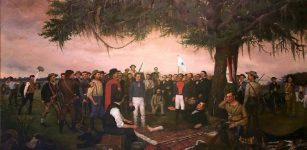 Texas Revolution – A Courageous Fight For Independence
Featured Stories | May 30, 2019
Texas Revolution – A Courageous Fight For Independence
Featured Stories | May 30, 2019 -
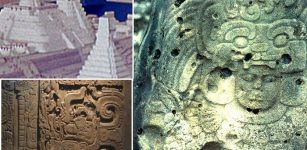 Tikal Of Maya: Sophisticated Culture That Experienced Humble Start, Golden Age, Wars And Decline
Featured Stories | Apr 4, 2022
Tikal Of Maya: Sophisticated Culture That Experienced Humble Start, Golden Age, Wars And Decline
Featured Stories | Apr 4, 2022


